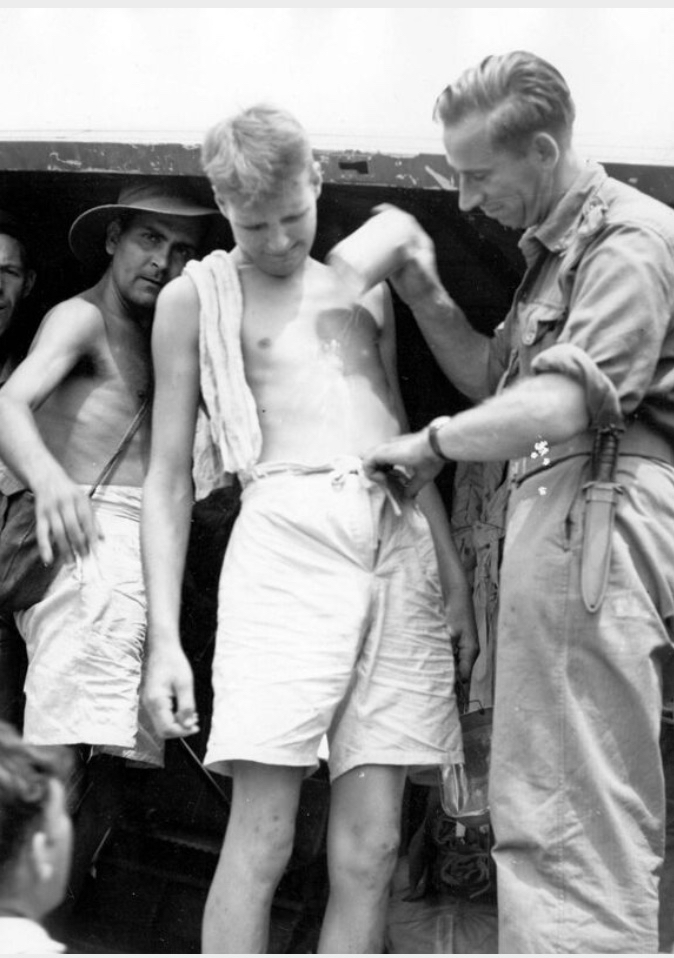Total of seven men from 2/4th commenced work on the Railway:
Annear, Magill, Quinn, Squance who were joined by 2/4th Java POWs: Booth, McAskil and Banks. (Booth and McAskil both died on Railway)


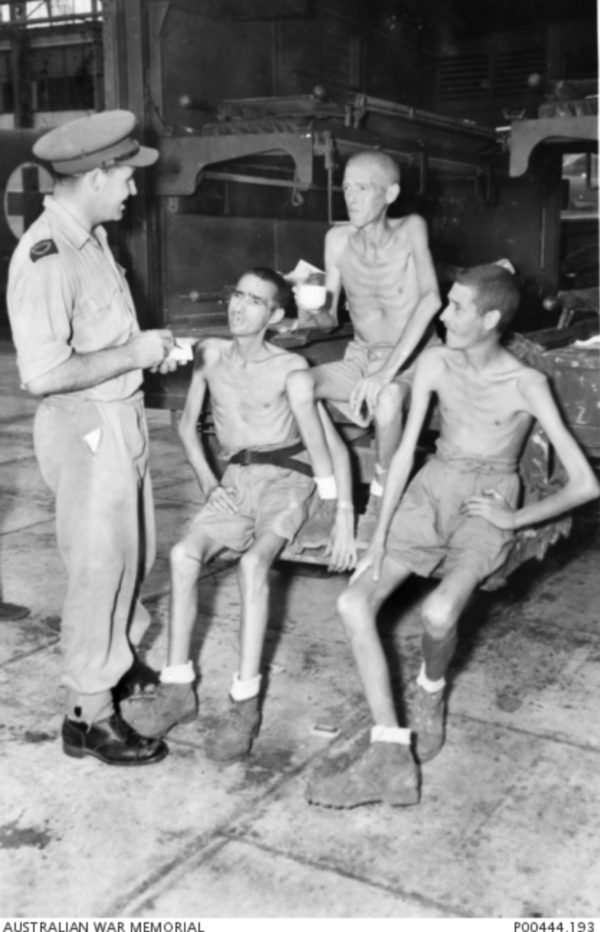
LIBERATED ALLIED AND AUSTRALIAN PRISONERS OF WAR FROM PALEMBANG, SUMATRA, RELATE THEIR EXPERIENCE TO A BRITISH WAR CORRESPONDENT IN SINGAPORE. (NAVAL HISTORICAL COLLECTION)
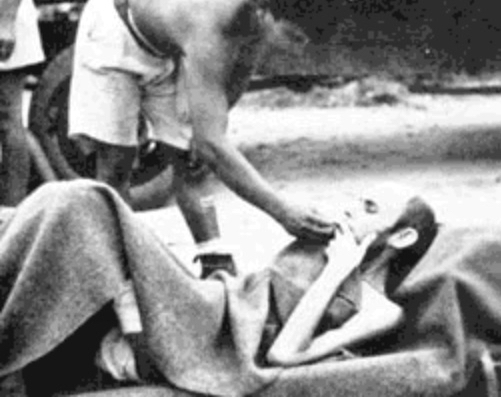
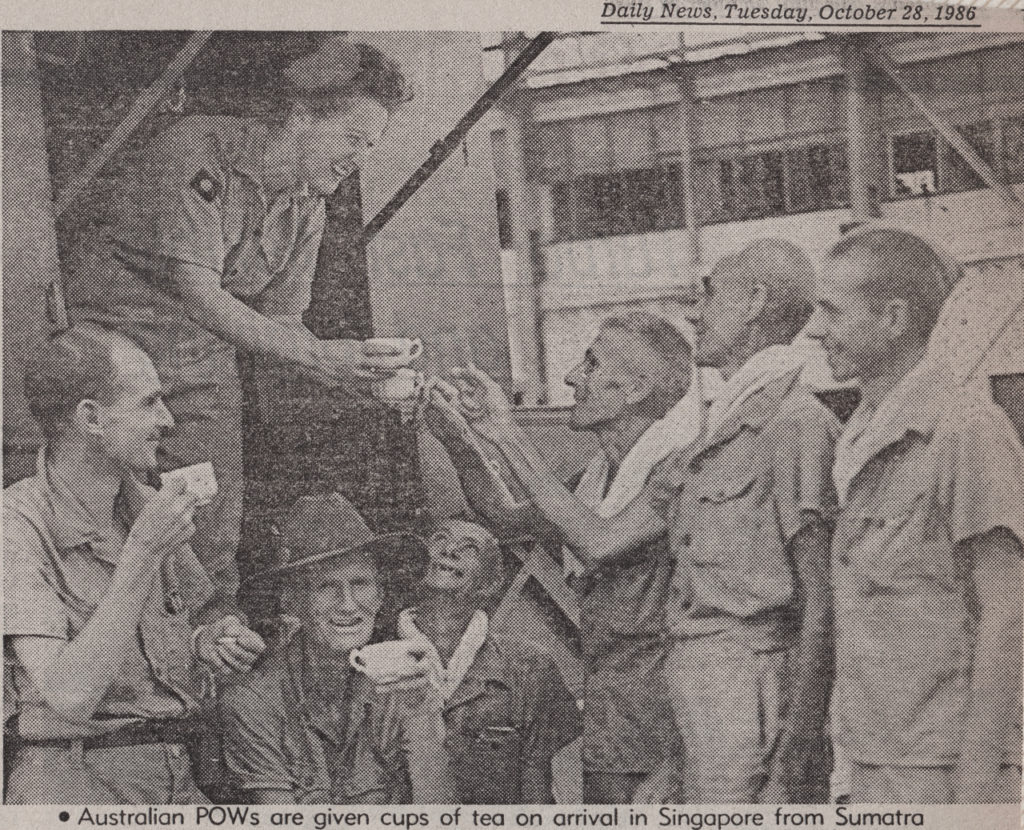
Above: Printed in Daily News, Perth in 1986.
Pakan Baroe/Pakanbaru was a small port about 90 miles along the Siak River from its mouth. The river was sufficiently deep to accommodate ships up to 800 tons all year round.
From early 1944 when Japan realised the tide was turning and they were losing many ships to the Allies it was decided that in event of an Allied attack on Western Sumatra, Japanese reinforcements could be brought in by sea utilising the shelter of islands between Singapore and Sumatra. Japanese troops would then be brought straight up the Siak River to Pakan Baroe.
The following list of construction camps and approx. distance from beginning at Pakan Baroe:
Construction began 26 Oct 1944 and was completed one week after the end of the war 22 Aug 1945.
No 1. 000.00km Pakan Baroe – Lies about half way from east to west Sumatra on the Equator.
No 2. 5 km Tengkerang Hospital or Death Camp – There were two camps in this area round Camp 2 located at Tangkerang Tengah.
No 2a. 15 km Koebang – located at Simpang Tiga, a few hundred metres further south.
No 3. 18 km Kampung Petas and Kubang – Camp 3 is located at Kampung Petas, (previously Kotabulu). The water storage for the kitchen and camp area is all that remains here. There may have been two camp areas here, one main camp or possibly the Japanese camp, and another closer to the Kampar Kanan river and the railway bridge approach on the northern side of the river.
Camp 3A. Kubang – Nothing is left in this wet and swampy area other than the stream crossings and white sand quarry that was used for bridge embankments and approaches.
No. 4. Kampar Kanan River (south bank)
No 4 A & B. 19 km Teratakboeloah
No 5. 23 km Loeboeksakat/Lubu Sakit
No 6. 36 km Sungai Pagar
No 7. 75 km Lipatkain/Lipit Kain (North and South Bank). Camp 7 is on the south bank of the Kampar Kiri river while camp 7A is on the north side.
No. 7A. Camp was located next to where the railway line crossed the Kampar Kiri river. The bridge foundations where the line crossed the river can still be seen when the river is extremely low.
No 8. 111 km Kota Baroe
No 9. 142 km Logas
No 10. 160 km Loeboeck Ambajan/Kota Kombu
No 11. 176 km Pinto Baroe/Padang Torok – Camp 11 is the first of two camps located in the Kuantan Gorge.
No 12. 200 km Silukah (Siloewah)
No 13. 220 km Moearo/Muaro – Camp 13 is located in Muaro in West Sumatra. This is where the line connected with the original line built by the Dutch years before.
No 14. 118-119 km Tapoei-Petai spur line to the coal mine and camps 14 and 14A began not far from camp 8 at a village called Petai.
Similarities to Burma-Thai Ralway included – type of work, rations and treatment meted out to POWs by Korean guards – except the POWs began this project with poor physical and mental health having already been prisoners for 2 1/2 years and food supplies were reduced and became more scarce. POWs were skeletal, many unable to walk and daily deaths by the time they were rescued.
(With limited information available and few records of written/published personal accounts, we are unable to provide detailed account.)
Most important is the POWs who were there receive the recognition they deserve for their work and lives lost on this railway project.

You Can read further about 2/4th men escaping Singapore to Sumatra
Please read about POWs sailing Sumatra
Please read about Evacuation of the POWs from Sumatra – another story!
A personal story of a POW who worked on Railway Sumatra
Read about three 2/4th boys sent from Java to Sumatra to work on Railway 1944 :
Of the three 2/4th POWs sent from Java to Sumatra, Banks was the only one to survive. On arrival in Sumatra, the three men were sent to Pakan Baroe. McAskil and Booth died working on the Railway.
Below: From the Beattie Collection -unfortunately date is unknown.



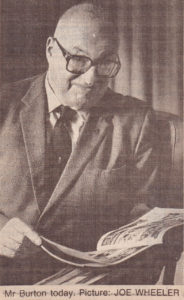
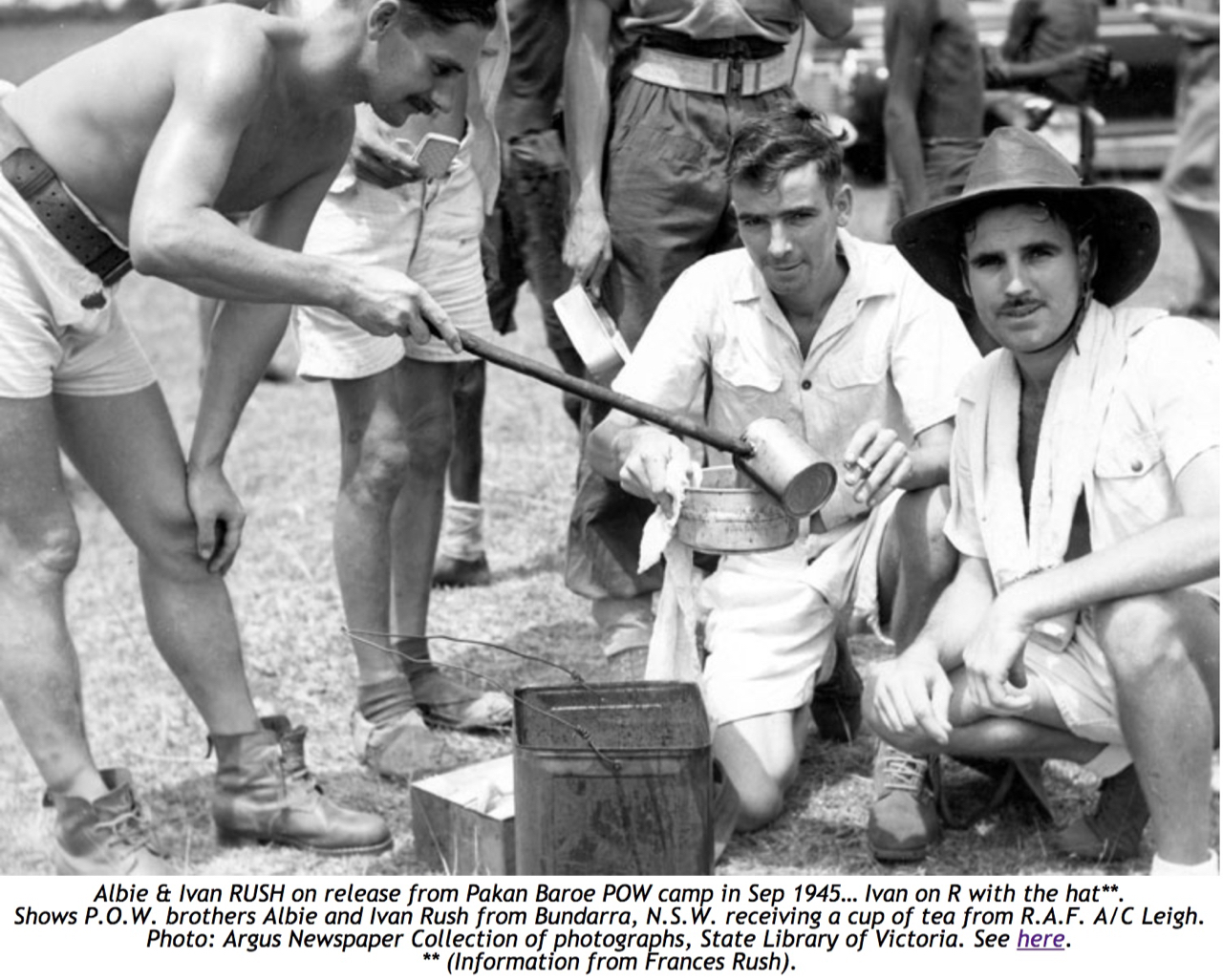
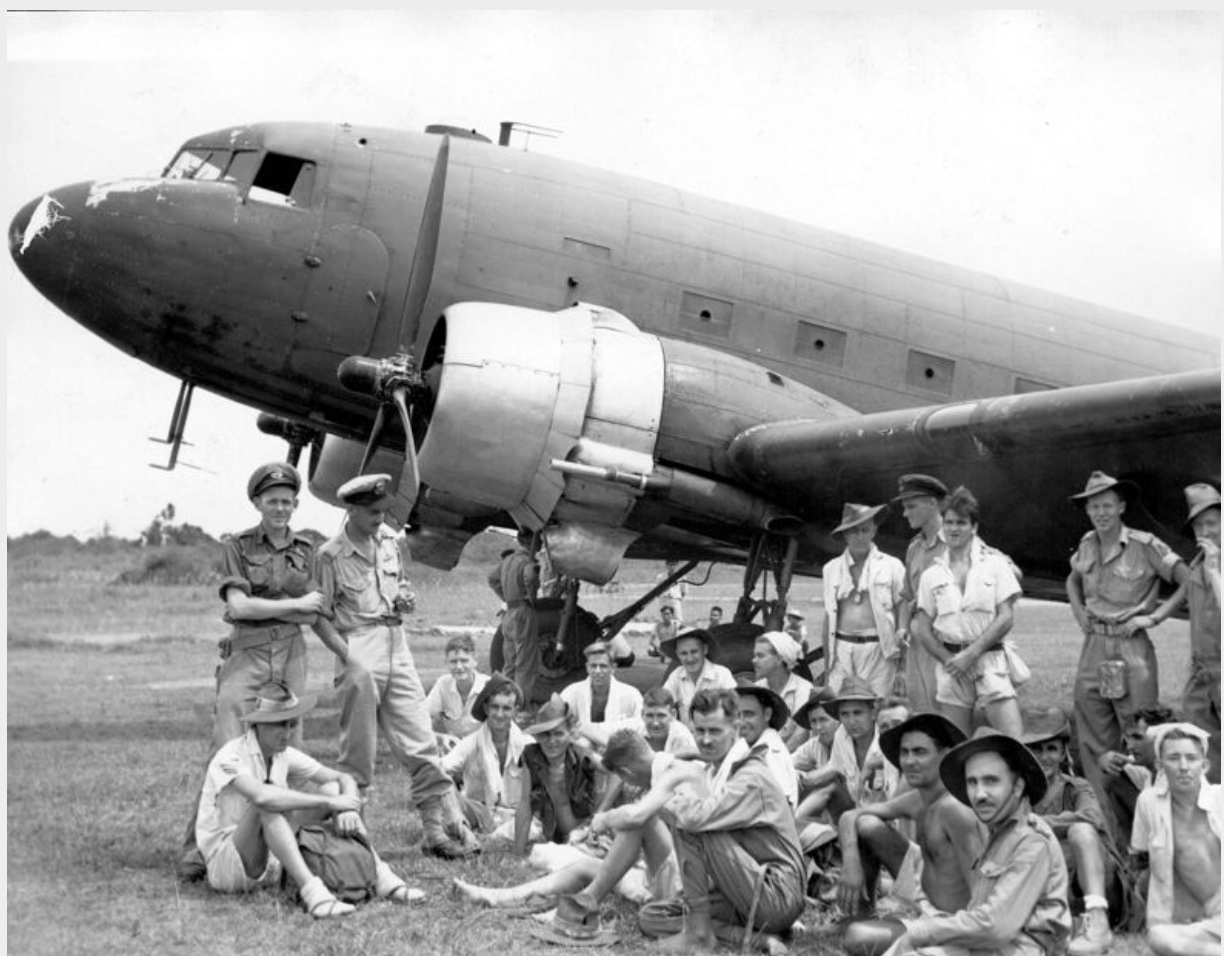
Below: being fitted out for clothes
